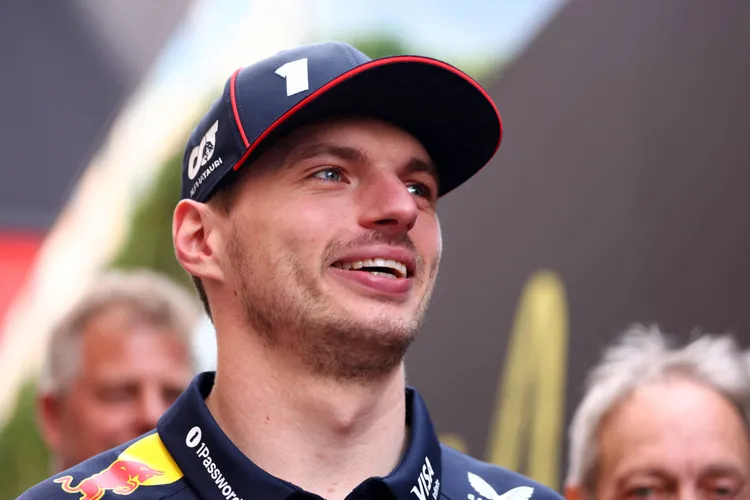Introduction

Lewis Hamilton is a name synonymous with speed, skill, and success in Formula 1. With seven World Championships and numerous records under his belt, Hamilton’s career is often seen as a series of triumphs. Yet, even the greatest face their darkest moments on the track. Recently, Hamilton described what he calls “my worst race” — an eye-opening reflection that reveals the high stakes, pressure, and resilience behind the glamour of F1.
In this detailed article, we dive into Hamilton’s toughest race ever, unpack the lessons learned, and address the most frequently asked questions about this defining moment. Whether you’re a motorsport fan, a sports psychology enthusiast, or a business leader seeking inspiration from elite performance, this story offers powerful insights.
Why Does Lewis Hamilton Call This His “Worst Race”?
Lewis Hamilton’s admission about his worst race isn’t just about poor performance — it’s about a perfect storm of technical failures, mental pressure, and the unforgiving nature of elite competition. Identifying this race provides a rare glimpse into the vulnerability of a champion.
The Race in Focus: What Happened?
While Hamilton has faced many setbacks, the race he refers to as his worst occurred during the 2021 Hungarian Grand Prix. Despite starting strong, the race turned disastrous due to a major collision caused by another driver, which resulted in Hamilton finishing well outside the points for the first time in years. The incident was a harsh reminder of how quickly fortunes can change in Formula 1.
Top 5 Reasons Why This Race Stands Out as Hamilton’s Worst
- Unexpected Collision: The race was dramatically altered by a multi-car crash early on, forcing Hamilton to pit for repairs and lose vital positions.
- Mechanical Issues: Compounding the crash damage were technical glitches that hampered his car’s performance.
- Psychological Toll: Hamilton openly discussed the emotional impact, highlighting frustration and disappointment unlike any previous race.
- Points Loss Impact: The race severely affected his championship bid, creating a sense of urgency and pressure for the remaining season.
- Public and Media Scrutiny: The race exposed Hamilton to intense criticism, testing his resilience under the global spotlight.
What Can We Learn From Hamilton’s Worst Race?
Hamilton’s candid reflections provide invaluable lessons for anyone facing adversity:
- Resilience is Key: Even the best falter, but the real test is how you respond.
- Adaptability Matters: Conditions change fast — technical problems and external events demand quick thinking.
- Mental Strength is Essential: Success isn’t just physical; managing emotions under pressure makes or breaks performance.
- Preparation Meets Opportunity: Continuous learning prepares champions to bounce back stronger.
Frequently Asked Questions About Hamilton’s Worst Race
1. What exactly made this race Hamilton’s “worst”?
The combination of a serious collision, technical issues, and the psychological impact distinguished it from his other challenging races. Hamilton called it “a nightmare” due to the feeling of helplessness despite his best efforts.
2. How did this race affect Hamilton’s overall 2021 season?
Hamilton lost critical championship points, narrowing his lead and increasing the pressure in subsequent races. It heightened the stakes in a fiercely contested season against rival Max Verstappen.
3. How did Hamilton bounce back after this race?
By focusing on mental resilience, rigorous preparation, and leveraging his team’s strengths, Hamilton recovered and delivered top performances, showcasing the hallmark of a true champion.
4. What role did the team play during this setback?
Mercedes worked relentlessly on car repairs, strategy adjustments, and psychological support, demonstrating that success is a collective effort.
5. Are such setbacks common in F1?
Yes. Racing is inherently unpredictable, with even the best drivers facing technical failures, accidents, and strategic challenges regularly.
Key Statistics That Highlight the Impact of Hamilton’s Worst Race
- 2021 Hungarian GP Finish: 10th place (outside points)
- Points Lost: 12 points compared to the previous race’s finish
- Championship Gap: Reduced from 8 points to 3 points behind rival Max Verstappen post-race
- Average Points per Race (2021 Season): 15.2, making this result a significant outlier
- Number of Collisions: 1 major incident involving 4 cars on lap 1
Why This Story Matters Beyond Racing
Hamilton’s “worst race” transcends sports. It’s a narrative about confronting failure head-on, a theme relevant to businesses, entrepreneurs, and leaders everywhere.
The Business Lessons:
- Risk Management: Just as Hamilton’s race was impacted by unforeseen events, businesses must anticipate disruptions and have contingency plans.
- Emotional Intelligence: Handling pressure and criticism with grace can preserve morale and reputation.
- Teamwork and Support: Success requires a coordinated effort from all stakeholders.
- Growth Mindset: Failure is an opportunity to learn and innovate.
How to Use Hamilton’s Experience to Improve Your Own Performance
- Accept Failure as Part of Growth: Don’t fear setbacks; embrace them as learning tools.
- Stay Focused on Your Goals: Even when things go wrong, keep your vision clear.
- Prepare for the Unexpected: Build resilience through training, planning, and flexibility.
- Leverage Support Systems: Surround yourself with people who lift you up.
- Reflect and Adapt: Analyze what went wrong and adjust your approach accordingly.
Conclusion: The Power of Owning Your Worst Moments
Lewis Hamilton’s admission of “my worst race” is a powerful reminder that even champions face setbacks. It humanizes a sports icon and inspires us to face our own challenges with courage and determination. The lessons from this race offer actionable strategies for success under pressure, resilience, and the importance of a strong team.
Hamilton’s journey through his toughest race exemplifies that greatness is not about never falling but about how you rise after the fall. For fans, professionals, and leaders alike, this story ignites motivation and redefines what it means to succeed.


